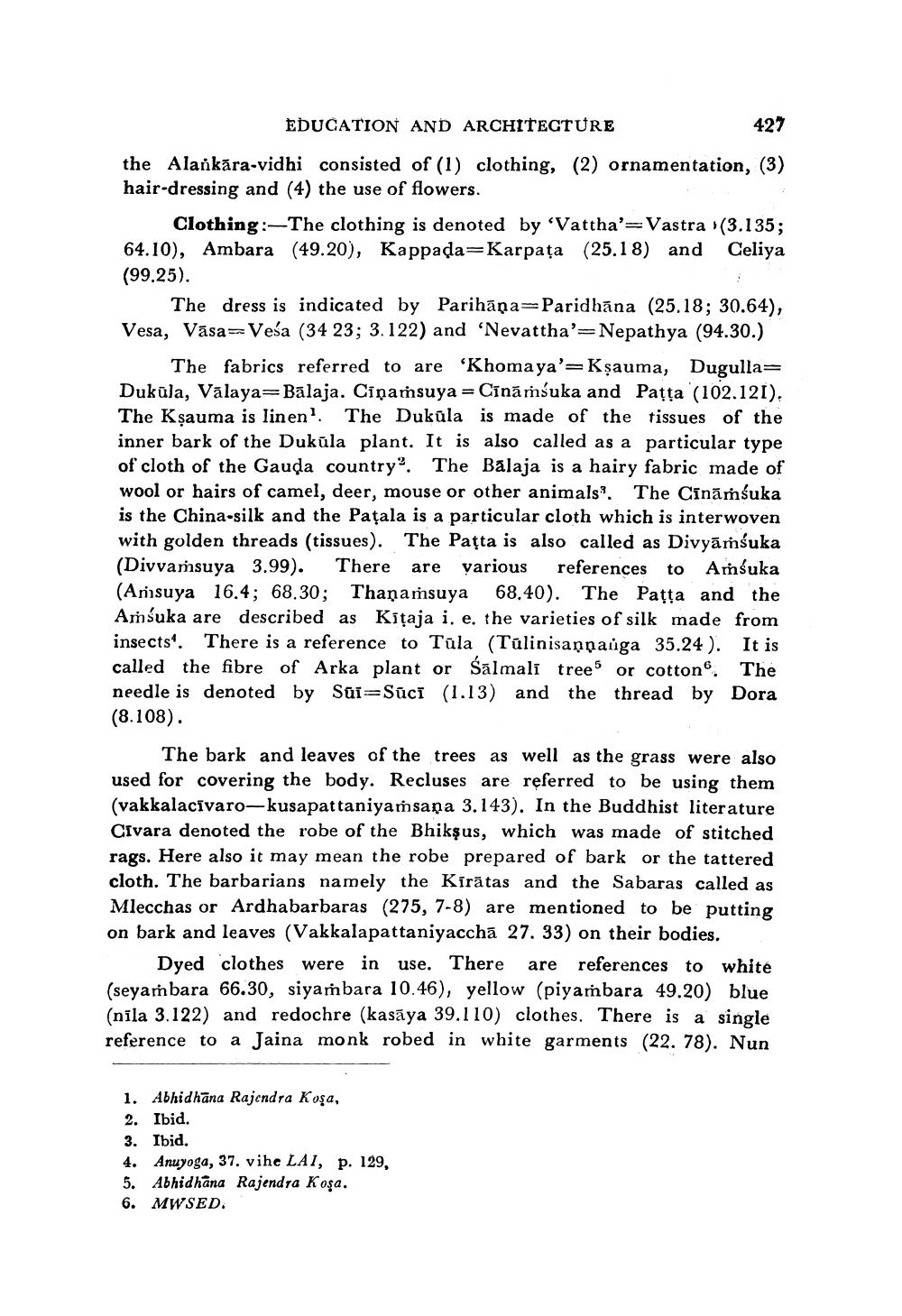________________
EDUCATION AND ARCHITECTURE
427
the Alankara-vidhi consisted of (1) clothing, (2) ornamentation, (3) hair-dressing and (4) the use of flowers.
Clothing:-The clothing is denoted by 'Vattha' Vastra (3.135; 64.10), Ambara (49.20), Kappada-Karpata (25.18) and Celiya (99.25).
The dress is indicated by Parihāņa Paridhana (25.18; 30.64), Vesa, Vasa Vesa (34 23; 3.122) and 'Nevattha' Nepathya (94.30.)
The fabrics referred to are 'Khomaya' Kṣauma, Dugulla= Dukūla, Vālaya=Bālaja. Cīņaṁsuya = Cīnāṁśuka and Paṭṭa (102.121). The Kṣauma is linen1. The Duküla is made of the tissues of the inner bark of the Dukula plant. It is also called as a particular type of cloth of the Gauda country. The Balaja is a hairy fabric made of wool or hairs of camel, deer, mouse or other animals". The Cināmsuka is the China-silk and the Pațala is a particular cloth which is interwoven with golden threads (tissues). The Patta is also called as Divyāṁśuka (Divvamsuya 3.99). There are various references to Amśuka (Amsuya 16.4; 68.30; Thanaṁsuya 68.40). The Patta and the Amsuka are described as Kitaja i. e. the varieties of silk made from insects. There is a reference to Tula (Tülinisannaiga 35.24). It is called the fibre of Arka plant or Salmali tree or cotton. The needle is denoted by Sui-Suci (1.13) and the thread by Dora (8.108).
The bark and leaves of the trees as well as the grass were also used for covering the body. Recluses are referred to be using them (vakkalacivaro-kusapattaniyamsana 3.143). In the Buddhist literature CIvara denoted the robe of the Bhiksus, which was made of stitched rags. Here also it may mean the robe prepared of bark or the tattered cloth. The barbarians namely the Kīrātas and the Sabaras called as Mlecchas or Ardhabarbaras (275, 7-8) are mentioned to be putting on bark and leaves (Vakkalapattaniyaccha 27. 33) on their bodies.
Dyed clothes were in use. There are references to white (seyambara 66.30, siyambara 10.46), yellow (piyambara 49.20) blue (nila 3.122) and redochre (kasaya 39.110) clothes. There is a single reference to a Jaina monk robed in white garments (22. 78). Nun
1. Abhidhana Rajendra Koşa,
2. Ibid.
3. Ibid.
4. Anuyoga, 37. vihe LAI, p. 129,
5. Abhidhana Rajendra Koşa.
6. MWSED.




